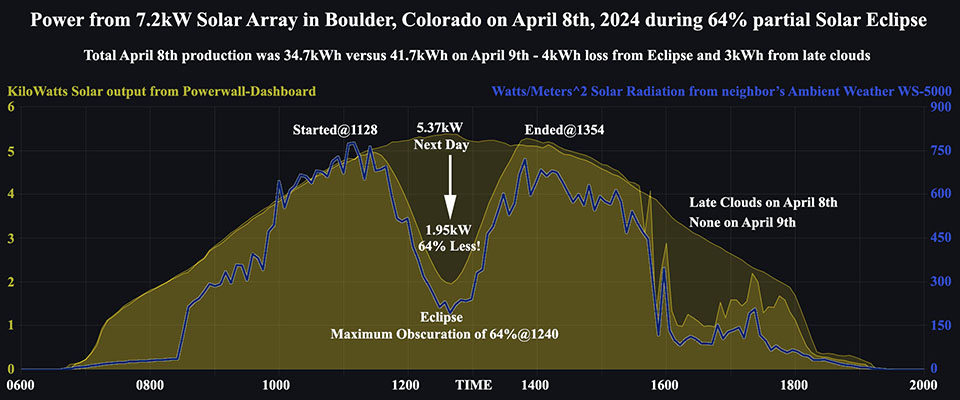So I setup my super-sophisticated Solar observatory on my back deck ... which is a monocular (from Goodwill!) on a tripod with piece of cardboard providing a shadow so the projected image of the eclipsed sun can be seen on a pillow case! ;-)
BTW, it's hopefully obvious that you should NOT look through the monocular at the sun. This is VERY DANGEROUS since the sunlight is magnified/focused. So don't even do this while wearing eclipse glasses. If you really want to look, then make SURE you have a proper eclipse filter FULLY blocking the FRONT side of the monocular. See my notes from the May 20th, 2012 Partial Solar Eclipse setting over Colorado Rocky Mountains.
So to aim it, while looking almost 90° from the side (see 2nd picture), point it in the right general direction. Then start moving it around until you see something bright in the glass - again, you are almost 90° away from the optic path. At that point, take a look at the "floor" ... and you should see the image "somewhere" (move it around slightly if need be) and then you'll "see" the sun projected. Then adjust the monocular as needed ... keeping in mind it's the "reverse" direction of the image below - you'll figure it out quickly. Then focus for best possible image - I could actually see a sunspot! ;-)
BTW, you'll be surprised how "fast" the sun moves ... so you'll need to do periodic adjustments of the monocular ... plus have to move the pillow case over as needed. Also, you should hang a weight from the tripod (as I subsequently did) so that it (hopefully!) doesn't come tumbling down (cardboard is very susceptible to wind) and is less vibration sensitive.
Yep - this actually works pretty good!
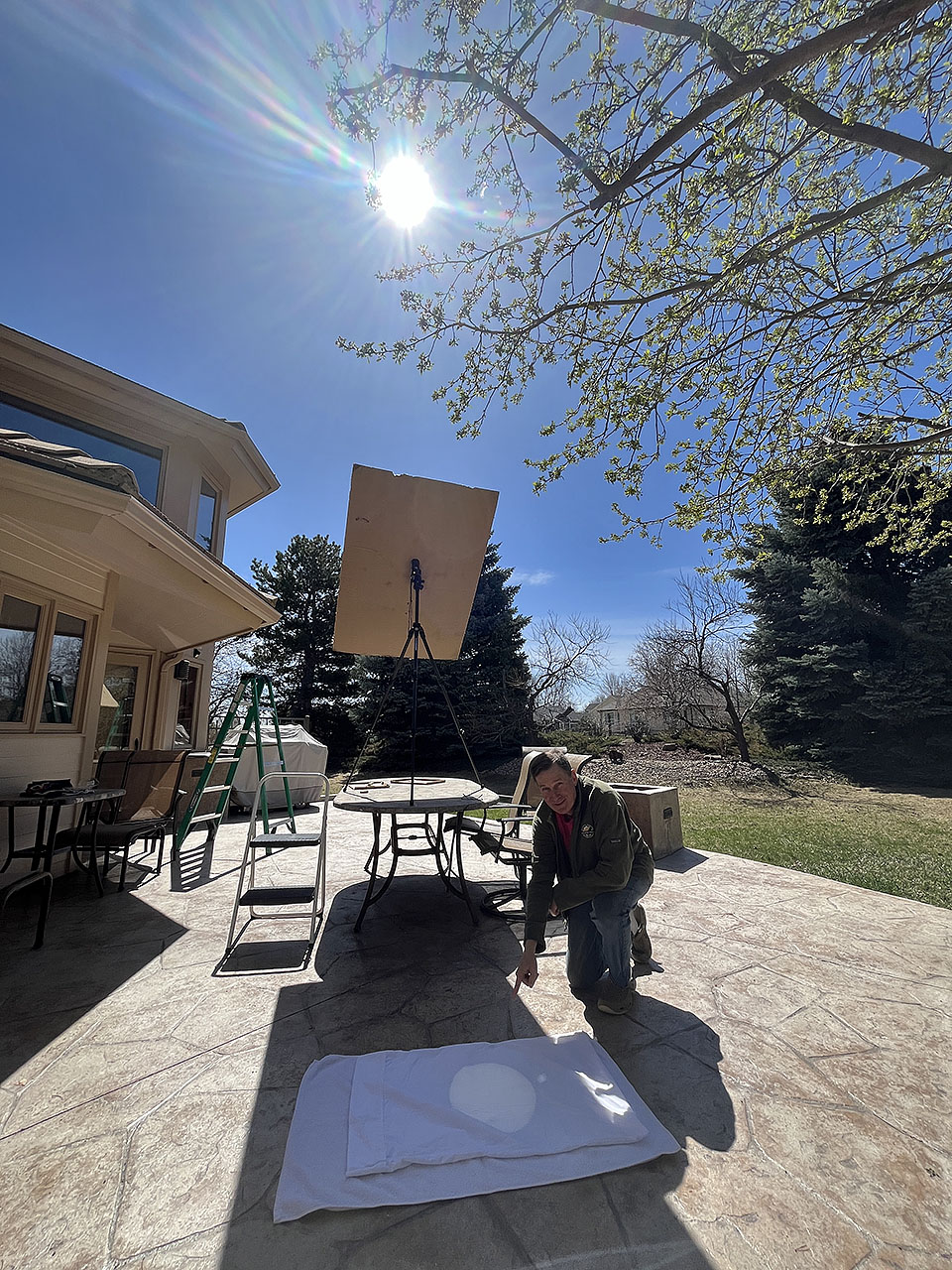
Adjusting the monocular as the sun/moon keep moving
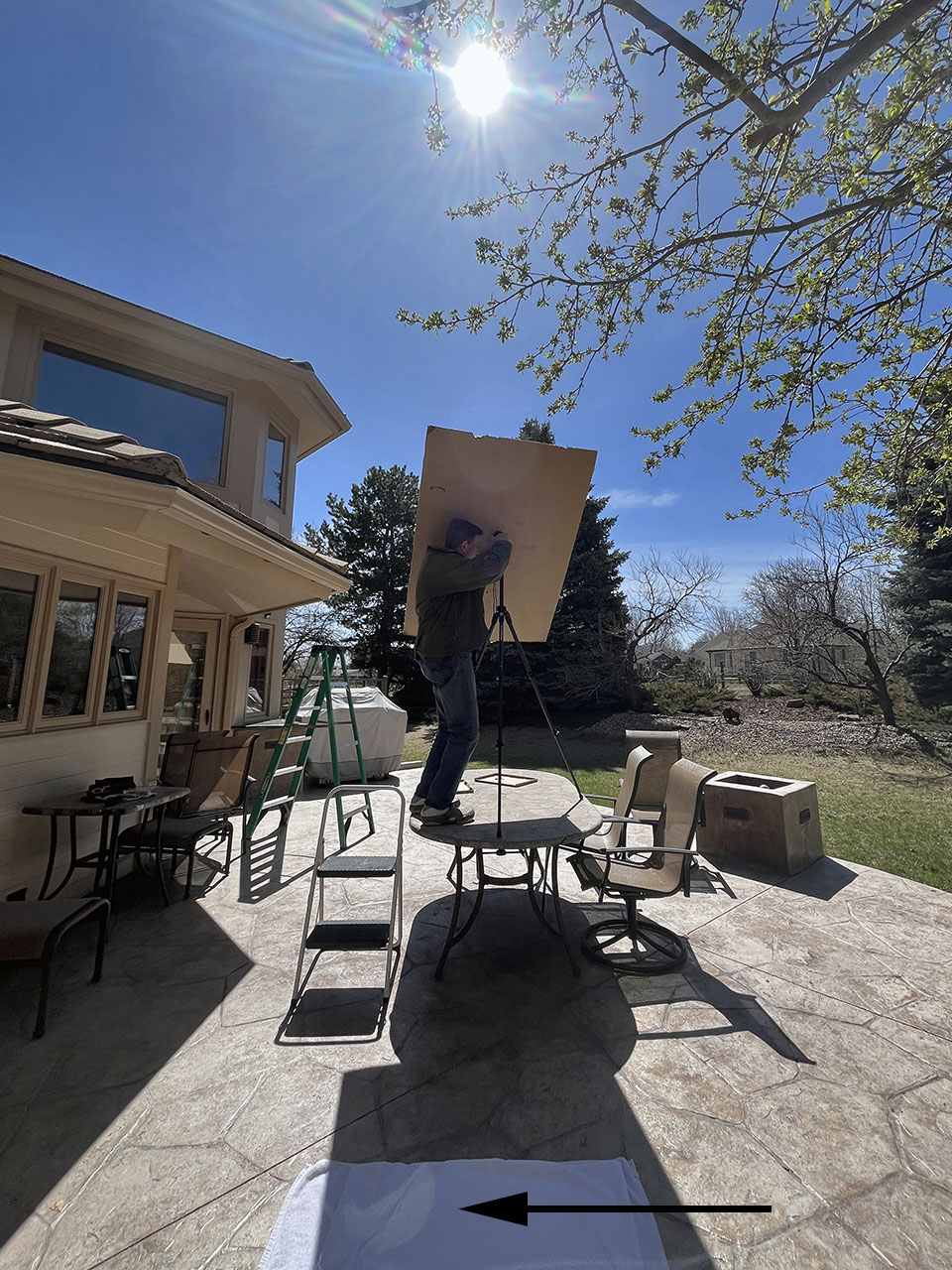
Works pretty well on a white towel, but clean/pressed pillow sheet is better

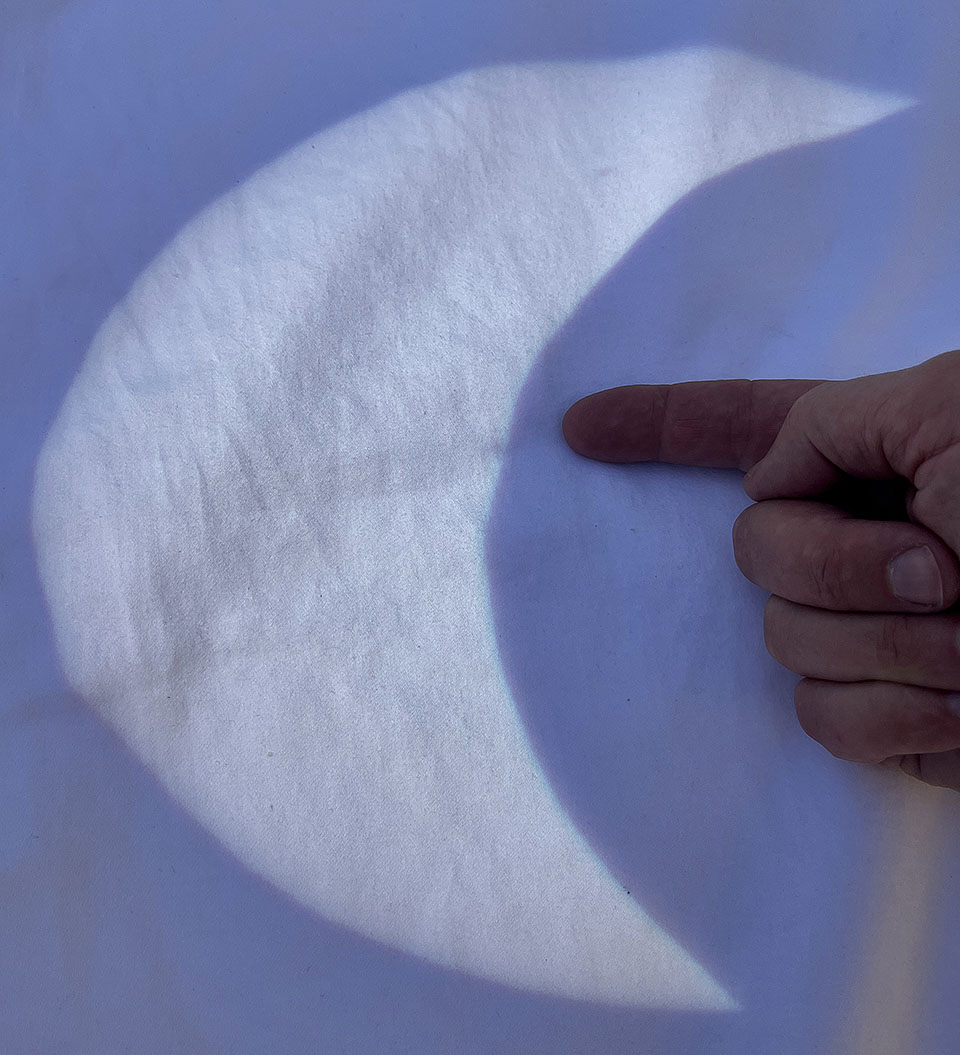
So needless to say, I was kinda wondering if these were "legit" ... but how do you REALLY know? The "media experts" advise to look for text showing they meet the ISO standards ... but any "fake" eclipse glasses would surely do that themselves. The good news is that the manufacturer - Kesseph - is on the American Astronomical Society Safe Solar list.
Also, what you (and I) did was put them on indoors and confirm I can't see anything except (barely) very bright lights. I then took them outside on a sunny day and looked around - again, you should (basically) not be able to see anything. Then take a quick look at the Sun. You should see a sharp-edged, round disk that’s comfortably bright. Depending on the type of filter in the glasses, it's normal that the Sun may appear white, bluish white, yellow, or orange.
If your eclipse glasses pass all three tests, they are probably safe. But if you aren’t completely confident of their safety, you should use them sparingly. Rest assured the eclipse takes a while as it develops slowly (it's kinda like Watching Grass Grow) so just look for a few seconds every couple of minutes.
Note that if you KNOW you are in the path of totality, then you can remove the eclipse glasses once the sun is FULLY obscured, but be sure to put them back on when it's over.
Stupid Solar Geek tricks - using a Colander as a pinhole projector to see eclipsed sun images

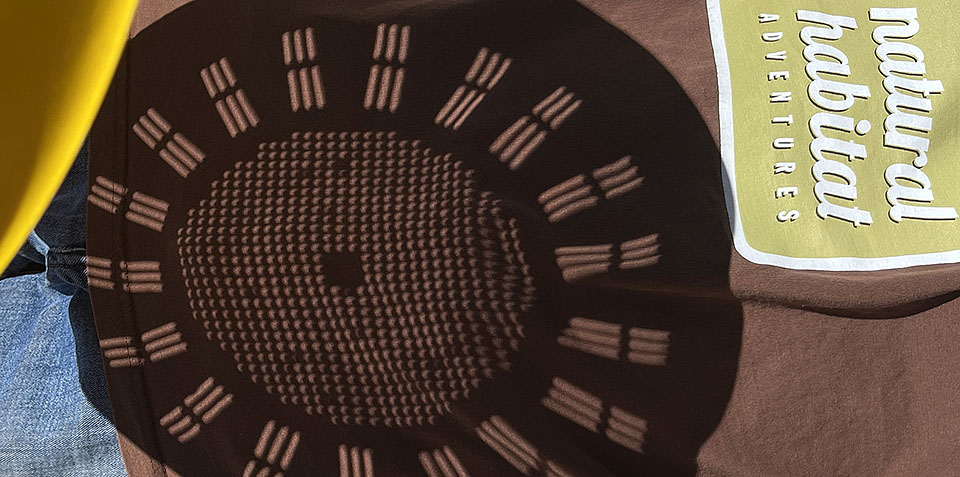
My neighbor's grandkid was pretty excited ... and cute!
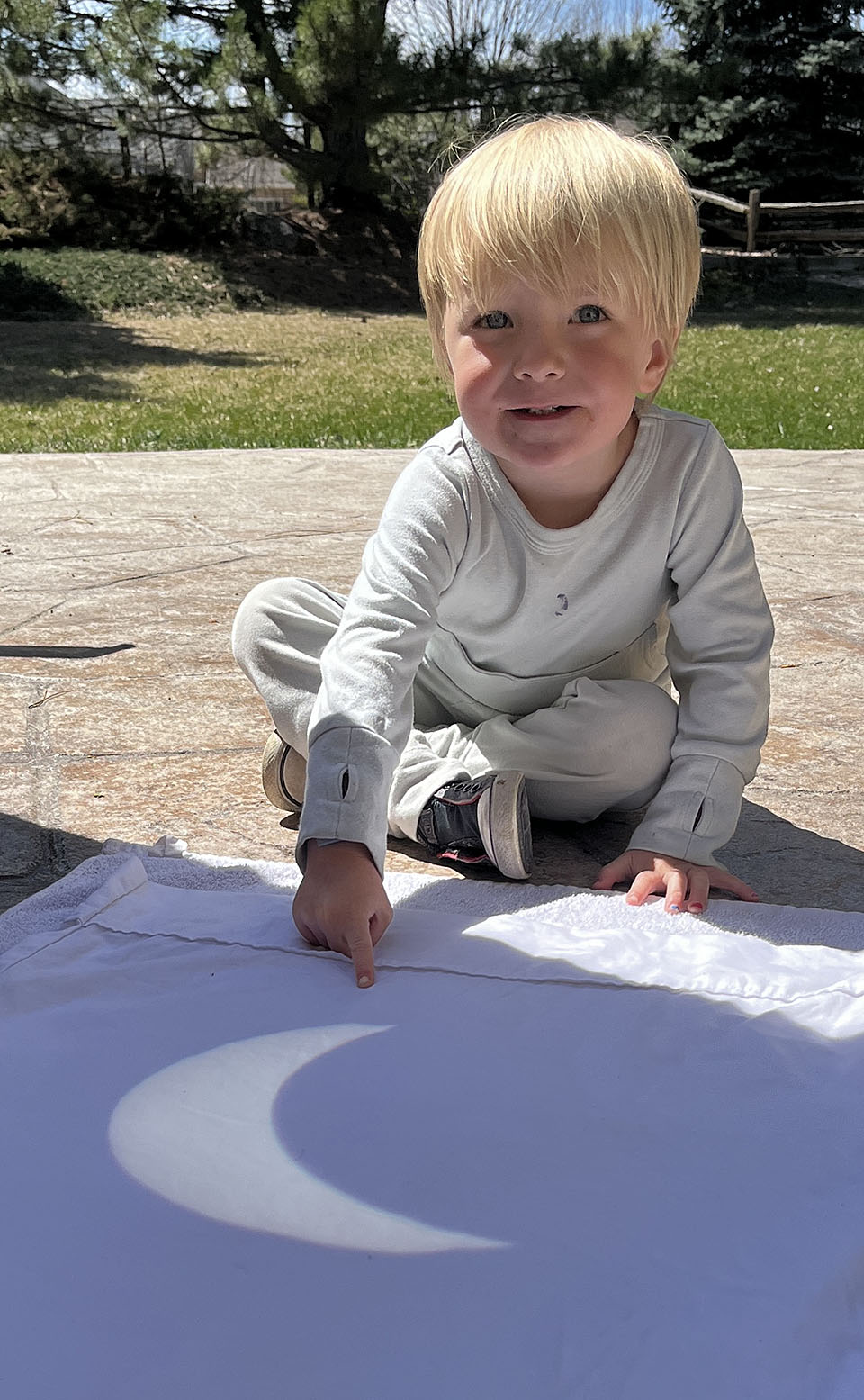
They were super smart - future solar astronomer! ;-)
Since April 8th and 9th were almost identical weather days during the Solar Eclipse, it provides an excellent comparison. There were no clouds in the sky, very light winds (good thing with the cardboard shade!), and temperatures at 1128 were both about 53 degrees. During the eclipse, the temperature dropped a couple of degrees, but it felt like much more!
For all of April 8th, production was 34.7kWh versus 41.7kWh on April 9th. However, there were some late afternoon clouds on April 8th ... so analyzing that timeframe shows it resulted in a 3kWh reduction. And between 1128-1354, there was 8.2 versus 12.2 kWh generated those two days ... so the 64% partial Solar eclipse resulted in an overall loss of 4kWh - about a third for those 2.5 hours.
Note that at the maximum 64% obscuration of the eclipse, the output at 1240 on April 8th
was 1.95kW versus 5.37kW on April 9th.
Which is a 64% reduction in solar energy! ;-)
Internet traffic also dropped per Cloudfare.
Solar Radiation from a neighbor and Power output from my Solar Array - lost 4kWh from the Eclipse!
